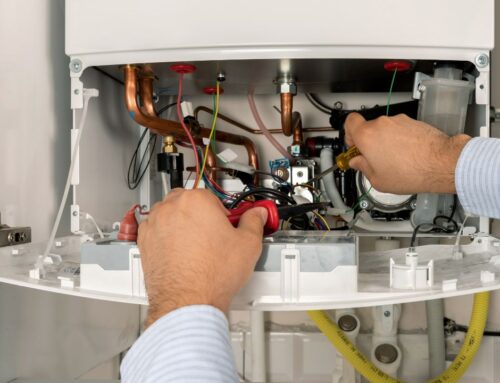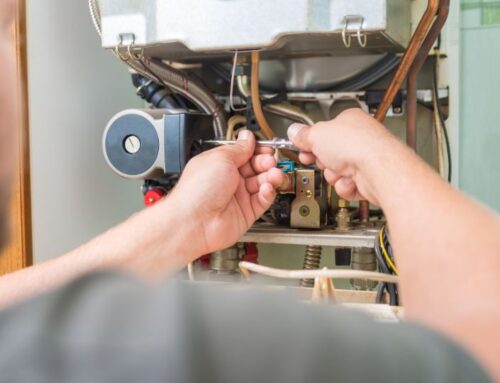Plummeting temperatures in the Denver winter can cause lower humidity levels. This could lead to dry skin and eyes, chapped lips, headaches, stuffy noses, sore throats, dehydration, and nosebleeds, among others. That’s a big no for the colder months, right? So why does this occur? Humidity is retained more effectively by warmer air than by colder air. Roughly 45% relative humidity is the sweet spot for optimal comfort indoors. However, when cold, dry air from outside enters your home, the humidity level might drop below 30%.
The immune system’s ability to fight off allergens, bacteria, and viruses is weakened when humidity levels are this low. This is because dry air has a drying effect on the mucous membranes that line our airways, causing them to deteriorate over time. Our airways get irritated or infected when this mucus barrier is compromised.
The best weapon against these winter miseries is an armed mind, so arm yourself with the knowledge of what to look for and then do something about it. Learn how to do this here, and bid farewell to any winter blues for good!
Low Indoor Humidity Warning Signs
Besides the respiratory signs we mentioned earlier, the following could be an indication of low indoor humidity levels.
The Deterioration of Indoor Furniture
It may come as a surprise, but wooden furniture may also be a reliable indication of the relative humidity and cleanliness of the air in a room. For the most part, wooden objects are the ones that suffer damage from low humidity levels. Furniture is prone to expanding and contracting in tandem with the relative humidity of the air if the air is too dry. This is a two-stage procedure. Wooden objects will swell somewhat when they take up even minute quantities of moisture from the air during the humid transition period.
This same moisture is rapidly dispersed back into the air after it has dried off. What’s the end result? Your home furnishings actually shrink! Furniture, wooden homes, and other wooden constructions often feature this expanding and shrinking. However, there is a breaking point for everything, and prolonged exposure to dry air may cause wood furniture to actually crack and distort!
The Existence of Static Electricity
Low relative humidity may be a problem inside for a variety of reasons. What’s more, is that enclosed indoor areas are also more likely to generate electrostatic discharge. Bear in mind that the effects of too much static in your home are certainly not trivial. A little jolt from touching a door handle may not appear dangerous, but electrostatic discharge may cause significant damage to your devices. For this reason, steady humidity levels must be maintained.
Experiencing Shivers after Turning Up the Heat
Your thermostat’s primary function is, of course, to regulate the temperature within your house. If a room is cooler than the thermostat setting, it could indicate low relative humidity. Due to the dry air, the temperature in the room is sometimes lower than what the thermometer indicates.
Not sure if your thermostat is working properly? Our trained professionals can repair it for you or install a new thermostat if needed.
What Causes Low Indoor Humidity?
Besides plunging temperatures, many houses aren’t as well insulated as they can be, so even if you turn on your central heating system, some of that warm air may be escaping through the walls and ceiling. Replacement of this discharged air is accomplished by bringing in fresh, cold, dry air from outside. The air will continue to dry out until enough moisture is provided via other means, such as cooking, bathing, etc.
At least several times per day, all of the air within your house should be replaced with outside air. However, if you let all your conditioned air go at once, your house will have too much dry air. If you suspect your air conditioner is malfunctioning and not maintaining the right air exchange rate, don’t wait to contact our technicians to fix or replace it.
Tackling Low Indoor Humidity
Here are a few tips on how to improve the humidity in your Denver home during winter.
1. Invest In a Humidifier
Humidifiers may be useful, but if you use one, make sure you choose one that can adequately humidify your whole home or the space in which you need it. For instance, it’s best not to choose little models that cannot adequately humidify large rooms. Contact us today, for advice on the ideal humidifier for your indoor space.
2. Run an Air Purifier
An air purifier may not raise indoor humidity, but it can assist with aspects of air quality management. It may remove allergens and bacteria from the air, which might aid in the treatment of respiratory problems and the prevention of airborne infections. We install and repair home cleaning systems like air purifiers, so don’t hesitate to give us a call for professional assistance.
3. Maximize the Use of Household Steam
If you want to raise the relative humidity in your home, you should consider leaving the bathroom door ajar while you shower, if possible. Your house will quickly get damp as the water from your hot shower evaporates.
Don’t rush to get rid of your bath water afterward, either. Even after the bath water has cooled to room temperature, part of the heat will continue to evaporate, adding moisture to the air. You may also attempt this method in your kitchen sink when washing dishes. Or use your microwave for added indoor moisture, as well as your stovetop.
4. Fill Your Home with Greenery
Through a process called evapotranspiration, houseplants may help increase humidity in a room. When plants take in water via their roots, the liquid travels up the plant’s stems and finally out of its leaves. When plants absorb water, the leaves will release some of it into the air. Ensure that the plants get consistent watering, since neglecting to do so will halt the process.
If you have questions about humidity levels in your home, call Day & Night Mechanical Solutions at 303.936.2696.



